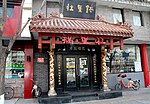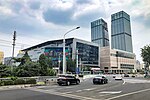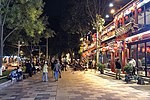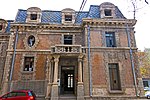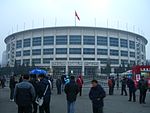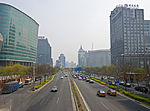State Council Information Office
Chinese propaganda organisationsInstitutions of the Central Committee of the Chinese Communist PartyOne institution with multiple namesState Council of the People's Republic of China

The State Council Information Office (SCIO; Chinese: 国务院新闻办公室; pinyin: Guówùyuàn Xīnwén Bàngōngshì; lit. 'State Council News Office') is the chief information office of the State Council of the People's Republic of China and an external name of the Central Propaganda Department of the Chinese Communist Party. Historically, SCIO was the external name of the Office of External Propaganda (OEP) of the Chinese Communist Party (CCP) under an arrangement termed "one institution with two names." In 2014, OEP was absorbed into the Central Propaganda Department, turning SCIO into an external nameplate.
Excerpt from the Wikipedia article State Council Information Office (License: CC BY-SA 3.0, Authors, Images).State Council Information Office
Dongmencang Alley, Dongcheng District Dongsi (首都功能核心区)
Geographical coordinates (GPS) Address Nearby Places Show on map
Geographical coordinates (GPS)
| Latitude | Longitude |
|---|---|
| N 39.931293 ° | E 116.426952 ° |
Address
保利集团
Dongmencang Alley
100010 Dongcheng District, Dongsi (首都功能核心区)
Beijing, China
Open on Google Maps

